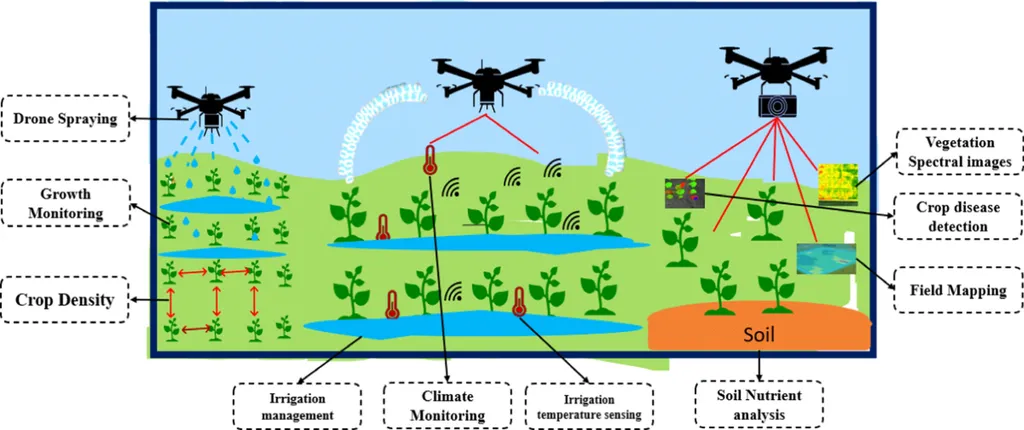In the ever-evolving landscape of precision agriculture, a groundbreaking study led by Haitao Fu from the College of Information Technology at Jilin Agricultural University in China is set to revolutionize the way we approach UAV (Unmanned Aerial Vehicle) path planning. Published in the esteemed journal *Remote Sensing* (translated as *遥感* in Chinese), this research introduces a novel deep reinforcement learning algorithm, MoE-D3QN, which promises to enhance operational efficiency, energy compliance, and environmental adaptability in agricultural scenarios.
Traditional path planning algorithms have often fallen short in balancing these critical factors, hindering the progress of precision agriculture. Fu and his team have developed a solution that integrates a Mixture-of-Experts mechanism with a Bi-directional Long Short-Term Memory model, significantly improving the efficiency and robustness of UAV path planning. “Our goal was to create a framework that could adapt to the complex and dynamic conditions of farmland environments,” Fu explained. “By leveraging remote sensing imagery and advanced machine learning techniques, we’ve developed a system that optimizes UAV operations in ways previously unattainable.”
The hierarchical coverage path planning framework constructed by Fu’s team utilizes crop information extracted from Sentinel-2 remote sensing imagery to create multi-level task maps. This innovative approach, combined with a dynamic energy consumption model and a progressive composite reward function, ensures that UAVs can navigate and operate more effectively in diverse agricultural settings.
The results of the simulation experiments are nothing short of impressive. In two-level scenarios, the MoE-D3QN algorithm achieved a coverage efficiency of 0.8378, marking a substantial improvement of 37.84–63.38% over traditional algorithms and 19.19–63.38% over conventional reinforcement learning methods. The redundancy rate was reduced to a mere 3.23%, a significant drop from the 38.71–41.94% observed with traditional methods and 4.46–42.77% from reinforcement learning counterparts. In three-level scenarios, the algorithm’s performance was equally remarkable, with a coverage efficiency of 0.8261 and a redundancy rate of just 5.26%.
The implications of this research for the energy sector are profound. As precision agriculture continues to gain traction, the demand for efficient and sustainable UAV operations will only increase. Fu’s work provides a robust framework that can be adapted to various agricultural and energy-related applications, ensuring that UAVs can operate with optimal efficiency and minimal environmental impact. “This research is a significant step forward in the field of precision agriculture,” Fu noted. “It not only enhances the capabilities of UAVs but also paves the way for more sustainable and efficient agricultural practices.”
As the world grapples with the challenges of climate change and resource depletion, innovations like the MoE-D3QN algorithm offer a beacon of hope. By optimizing UAV path planning, this research has the potential to shape the future of precision agriculture, making it more adaptable, efficient, and environmentally friendly. The findings published in *Remote Sensing* are a testament to the power of advanced machine learning and remote sensing technologies in driving agricultural advancements, setting a new standard for the industry.

